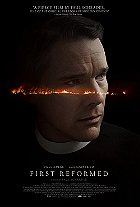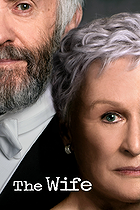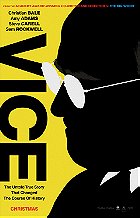Posted : 6 years, 2 months ago on 27 February 2019 07:28
(A review of
The twenty years between her scrappy, minimalist disco self-titled debut and this release, her ninth studio album, is an eternity as far as pop singers go. You didn’t exactly see Paula Abdul, Cyndi Lauper, or Taylor Dayne maintaining the same amount of chart presence, if not outright dominance. Madonna (and Madonna) was derided as a wispy flash-in-the-pan. How wrong the critics were and continued to be as every successive release spelled the proverbial end of her career. That last point amped up with the release of Erotica and all the ruckus surrounding it, including companion releases Sex, a limited-edition book, and Body of Evidence, another one of her questionable forays into acting.
By the time 2003 rolled around, proclaiming Madonna’s career over was as inevitable a piece of white noise to accompany her latest album release as was any controversy, major or minor, that swirled around it. The press loves nothing better than to wag their fingers and cluck their tongues at her, to chastise and discipline her for extending beyond the parameters of her gender and/or age. Yet there was something doomed about American Life from the start.
Our favorite pop provocateur blinked in the face of controversy for the first time. Remember the nasal intonations of “I’m an artist!” that went hand-in-glove with the reaction of her “Justify My Love” video? Well, that sass and conviction wasn’t here this time around. Our proudly defiant Midwesterner has always courted major reactions to the imagery she assigns her music, more so than any other artist to emerge from the music video era and stood by those titillations.
That makes it sound like she’s provided empty platitudes and not actual work worth reconciling on a political and artistic level. She very much has, but that doesn’t mean everything she’s done has been at home run. There’s been a fair share of groan-inducing self-importance, and American Life dripped with it from the start.
Ignoring the actual merits (or demerits) of the first single, Madonna’s planned video was released during the invasion of Iraq and married fashion with war imagery. It culminated in her throwing a grenade at stand-ins for former President George W. Bush and deposed despot Saddam Hussein. The actual video has its moments, but the marriage of a song recognizing some of the hollow trappings with fame and the horrors of war takes balls of steel. It’s hard to reconcile the two together as the song is trite, but there’s a deeper truth she’s clearly trying to press about war profiteering, war’s obscenities, and the media’s sensationalism, something one could argue she’d helped along in some shape or form.
She pulled the video, released a sanitized version in which she wore military garments and sang in front poorly rendered CGI flags, and the whole thing seemed like a concession of defeat right out the gate. It didn’t help that it was a poor choice of a lead single when “Hollywood” was sitting right there right along a collection of startlingly reflective, haunting ballads. And so, it was that American Life was released as a bit of a swing and a miss causing the singer to do what she swore she’d never do dust off those “embarrassing” oldies and hit the road. (For the record, I love the Re-Invention Tour.)
That’s a lot of time spent chronicling the history and cultural context of this album, but it’s important as American Life is as obsessed with the singer’s placement in the pop cultural firmament as the tabloids are to displace her from the throne. It’s a dark, insular, complicated song cycle about fame and privilege that isn’t immediately engrossing upon your first, second, or even tenth listen. There’s some work involved on your part to get into the groove (I’m sorry), but faults and all, I find myself continually coming back to it.
Ignoring the awkward rap section of “American Life” for a moment, the song’s basic premise is intriguing: the regrets, isolation, temptations, and compromises involved in attaining her level of notoriety and fame. Loneliness and ruminations on her personal demons provide the major framework for the album. “Mother and Father,” another song about the loss of her mother and fraught relationship with her father, finds the singer realizing she must let go of the anger in order to heal and grow as a person. “Nobody Knows Me” is a denouncing of media frenzy to tear down and gossip about public figures, specifically Madonna, and it’s a bit outré to think this was the same woman who twenty years prior declared to Dick Clark she wanted to rule the world. I guess it really is lonely at the top.
What emerges as you listen to the back-half of American Life is that this wasn’t a pop album at all. If it resembles anything, it’s a piece of eccentric folk music that’s laced through with electronic components. There’s a lack of polish that’s both hideous and refreshing as the reediness of Madonna’s voice isn’t soothed over, or it’s distorted into a malfunctioning fembot and unrecognizable as human. This transition shouldn’t come entirely as a surprise given Madonna’s words on Joni Mitchell: “I was really, really into Joni Mitchell. I knew every word to Court and Spark; I worshipped her when I was in high school.” Of all of her surprising influences, Mitchell’s painterly and impressionistic musings on love lost and won finally reflecting in Madonna’s midlife crisis is possibly the most shocking.
In reflection, Madonna’s self-appraisal and existential crisis were always looming on the horizon with the first cracks in her armor appearing on Ray of Light and Music. She’s given over to these questions, and there’s something brave about an icon removing the idolatry and showing the naked, vulnerable person beneath it all. American Life would be the big flop of her career up to this point, and I don’t foresee any critical reappraisals salvaging this one like they did for Erotica. It may not be one of her best efforts, but there’s just something so beautiful and strange about it that keeps me coming back.
DOWNLOAD: “X-Static Process”
 Login
Login
 Home
Home 95 Lists
95 Lists 1531 Reviews
1531 Reviews Collections
Collections
 0 comments,
0 comments, 







